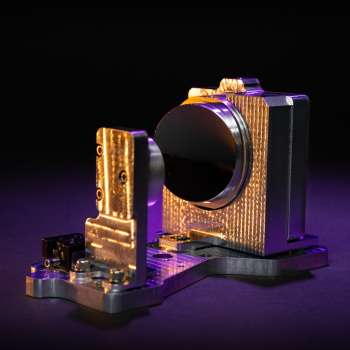Pressure-Tolerant Camera

Pressure-tolerant imaging technology is essential for deep-sea exploration, enabling the capture of high-quality images and data in environments subjected to extreme pressures. This technology is useful not only in marine research and underwater infrastructure inspection but also in terrestrial, airborne, and space settings where reliable imaging under harsh conditions is necessary. The ability to maintain system integrity and image clarity in such demanding environments supports scientific discovery, ensures the functionality of equipment, and expands the possibilities for exploration and monitoring in areas previously inaccessible.
However, current imaging systems face significant challenges when operating under extreme pressures. Traditional designs often rely on air or glass interfaces, which can fail or degrade in high-pressure environments, leading to unreliable imaging and increased maintenance costs. Additionally, these systems typically suffer from limited fields of view and reduced optical performance, restricting their effectiveness in capturing comprehensive data. The lack of advanced processing capabilities, such as real-time object recognition and autonomous decision-making, limits their functionality in dynamic settings. Moreover, issues like biofouling can obscure viewport clarity, and inadequate thermal stability can compromise overall system performance. These limitations hinder the reliability, versatility, and efficiency of existing imaging solutions in critical applications.
Technology Description
The pressure-tolerant camera system is designed for extreme environments such as deep-sea, terrestrial, airborne, and space. It features an enclosure filled with an incompressible fluid and a viewport that allows light to pass through. Inside the enclosure, a digital image sensor captures images, while a series of mirror lenses reflect incoming light from the viewport onto the sensor. The mirror lenses are crafted with sophisticated freeform optical surfaces, enhancing the system's wide field of view and fast aperture capabilities. Additionally, the system integrates advanced artificial intelligence for object recognition and autonomous decision-making, enabling selective data storage and transmission. For deep-sea deployments, it includes components like depth sensors, compasses, hydrophones, and illumination modules, making it adaptable for use as an autonomous lander or within unmanned underwater vehicles.
This camera system stands out because of its innovative approach eliminating traditional air/glass interfaces, which are vulnerable to failure under high pressures. By utilizing a two-element mirror lens system immersed in an incompressible fluid, the system achieves superior optical performance and pressure insensitivity. The freeform mirror design, manufactured through advanced techniques like diamond turning, offers a wide field of view and reduced sensitivity to the fluid's refractive index. The integration of AI capabilities allows for efficient in situ processing, minimizing false alarms and optimizing data transmission in bandwidth-limited environments. Additionally, the system's versatility across different operational contexts and its robust environmental protection make it a reliable solution for imaging in challenging and extreme conditions.
Benefits
- Operates reliably under extreme pressures without traditional pressure vessels
- Provides a wide field of view and increased aperture for superior imaging
- Minimizes optical distortions by reducing sensitivity to immersion fluid's refractive index
- Enables cost-effective fabrication through advanced manufacturing techniques
- Integrates AI for advanced in situ decision-making and object recognition
- Reduces false alarms and maintains a minimal acoustic signature for efficient operations